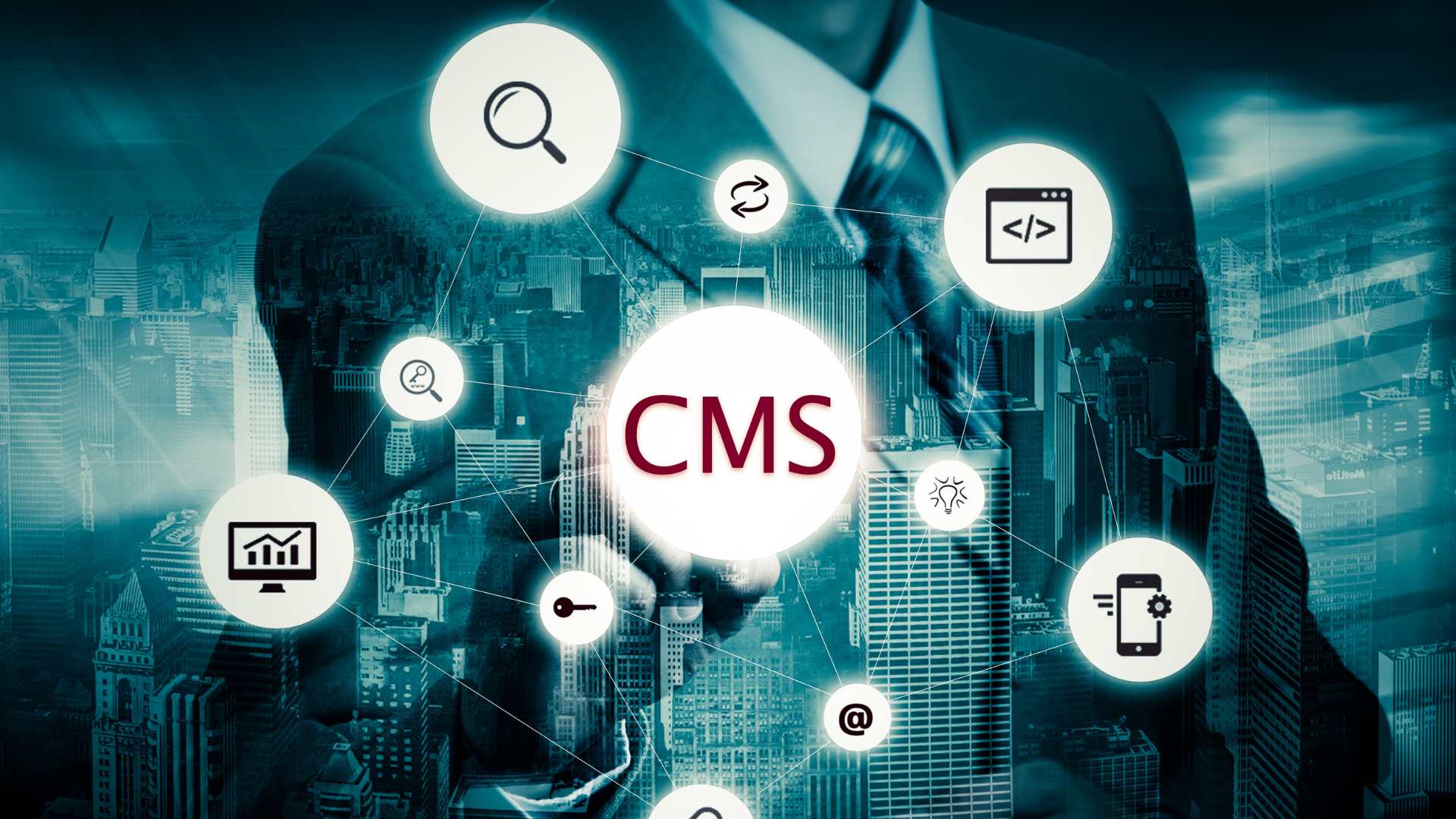Imagine you’re throwing the biggest digital party in the world. You’ve got this incredible thing—the website. You’ve got some great guests to invite—the content. And there’s the killer playlist—the brand message. But who’s going to be behind everything? Here comes your very own Content Management System, or CMS—the Digital Party Planner.
Think of some sort of hyper-efficient, tech-savvy assistant responsible for helping you systematize, create, and then publish all the cool content involved with your online shindig.
Think of it more like the mad genius behind the scenes of your website and blog—what lets it look so cool almost effortlessly and keeps this digital party rocking.
Want to know more about this? Let’s explore what is Content Management System. Read on!
What is Content Management System?
A content management system (CMS) is like a magic tool that helps you make a website without having to be a computer genius. It’s basically a program that lets you create, organize, and change stuff on your website without having to know all that complicated coding stuff. So, you can make a cool website without having to be a coding expert!
Instead of handling all the things aby yourself there are many tools and softwares available in the marketing that help you achieve your goals. We will talk about it in deep!
How does a content management system work?
A content management system is like that one magic woodcutter, only here to take the heavy work off your shoulders in the management of your website. As a result, the following processes are employed:
Content Creation and Editing:
Essentially, a content management system is designed to provide an easy user interface whereby users can create and edit content without any knowledge of hard coding. It is more like a highly advanced word processor right within your website.
Content Storage:
After you author your content, the CMS stores that content in a database. This is essentially a very well-organized digital file cabinet. Any piece of content, whether it is a blog entry, a product description, or an ‘About Us’ page, is saved as a discrete piece of information in this database, to be retrieved on demand.
Content Retrieval and Display:
Now, once an individual opens your website, it is the moment for the CMS to go into progress. The latter picks up the correct content and positions it on your website’s pages. The process takes only a fraction of a second, so visitors have a look at your correctly formatted content in no time.
User Management:
Most CMS platforms feature permissions for different user roles. This way, you can have various people working on your website, with multiple logins and specific powers. For instance, you might assign the ability to create and edit posts to the writer but reserve publishing power for the editors.
Template Application:
In a CMS, there are templates used to specify how your content is displayed on the site. The templates direct the layout, color scheme, and design on the pages of your content. The coolest thing about changing templates is you make your entire website look different without changing the content at all.
Updates and Maintenance:
Most CMS software comes with an internal system for updates. In this way, they can update new security patches and features automatically to keep your website safe and current, without you having to get into the technical details.
What makes up a content management system?
A content management system is somewhat like a puzzle. A few big pieces come together to make a really useful tool in managing your website. Let’s look at each part:
1. Content Management Application (CMA)
The CMA is the front end of the CMS, the part you interact with directly. It is like the cockpit of an airplane where you get full control of your journey. Here is where you can:
- Create and edit content
- Upload and manage media files
- Organize your site structure
- Manage user permissions
- Choose and customize templates
2. Content Delivery Applications (CDA)
The CDA, or content delivery/distribution application, is the engine that powers everything in the background in the analogy to the airplane we used before. It’s what takes all of the content you created with the CMA and exposes it to the website visitor. Some tasks the CDA is responsible for include the following:
- Retrieval of content from the Database
- Application of the appropriate Templates
- Generating web pages on the fly
- Management of the caching of web pages, speeding up delivery
The CDA is not dealt with directly on your end, but it is an essential facilitator so that your website can easily and quickly work.
3. Database
Your database is kind of like that storage hold in our airplane. It contains all of your content, user information, and site settings. Today, in the age we live in, most CMS databases are relational databases. Now that is a fancy way of saying that they are able to store complex information easily and retrieve it just as easily.
4. Templates
Templates can be thought of as pre designed layouts for your site. They embody the interior decoration of our aircraft, in the sense that they determine how everything is perceived by the passengers, i.e. by you the visitors of your website. The aspects governed by templates are many:
- Page design
- Colour theme
- Choice of typography
- Where menus and widgets will appear
5. Extensions and Plugins
This component enables the administration to determine who has access to various parts of their CMS. This is comparable to assigning roles within your airplane crew. You can usually create different levels of users, for example:
- Administrators: can do everything
- Editors: can preview and publish content
- Authors: can create but not publish
- Subscribers: can view restricted content
Top 10 Content Management Systems
So, WordPress is like the coolest way to manage all the stuff on your website. It’s super popular and used by a lot of people. Like, seriously, over 62.5% of websites with a content management system use WordPress.
Oh, and just so you know, when we say “WordPress”, we mean the one on WordPress.org, not WordPress.com. That’s where you can find the open-source WordPress software.
There are also other content management systems out there that people use, like:
1. Adobe Experience Manager Sites

Adobe Experience Manager Sites is one of the ways a full Adobe Experience Cloud operates within the links. Businesses with an aim to design, manage, and deliver digital experiences to the audience across varied channels will find Adobe Experience Manager Sites their go-to tool.
The CMS is able to deal with very complicated, large-scale websites. The biggest prerogative the system has holds in the integration with Adobe products and the advanced personalization, with which the companies can deliver tailored content to their varied target audiences.
Key Features:
- Advanced personalization and A/B testing
- Omnichannel content delivery
- AI-powered content intelligence
- Advanced Digital Asset Management
How to Use:
- Build up content structure
- Setup and design templates
- Build up pages with the components present
- Then publish your content and manage it across different channels present.
Pricing:
Custom pricing based on specific needs, generally falling into the enterprise grade.
2. Contentful
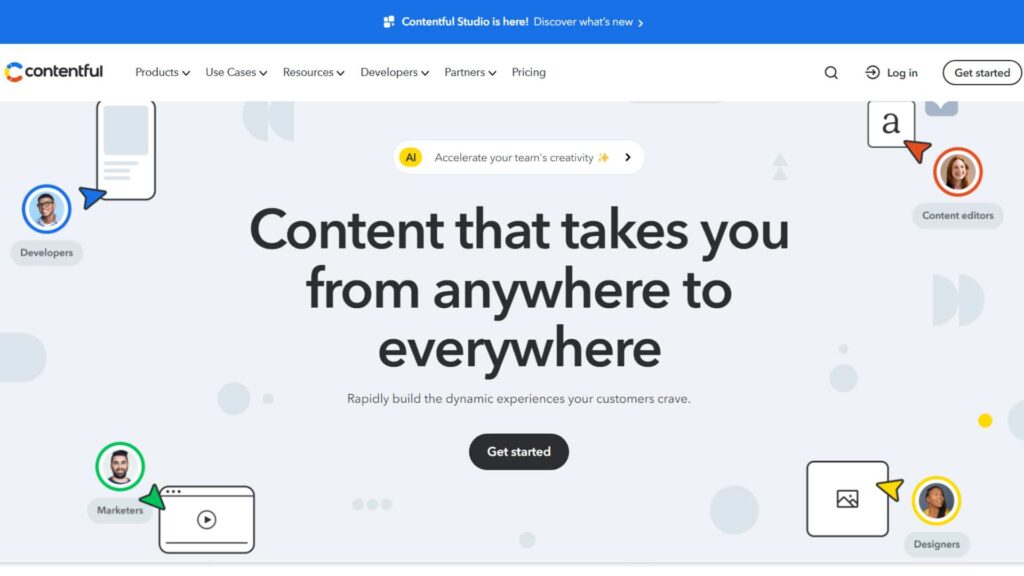
Contentful is a headless CMS that has gained tremendous popularity due to its flexibility and API-first approach. It doesn’t follow the CMS norms, as it separates the content management from the content presentation and permits the development of any kind of experiences on the frontend by using any programming language or, alternatively, any framework.
This makes it a really good option for enterprises that want to deliver content over a wide range of platforms and devices.
Key Features:
- Headless architecture with powerful APIs
- Flexible content modeling
- Multi-language support
- Robust version control and content workflows
- Excellent for omnichannel content delivery
- It is very developer-friendly, with good documentation.
- Scalable and performant.
How to Use:
- Firstly define your content model
- Create the content and organize it
- Deliver content to all the platform through API
- Integrate with desired front-end frameworks.
Pricing:
Starts with a free plan for small projects. Paid plans begin at $489 per month.
3. Contentstack
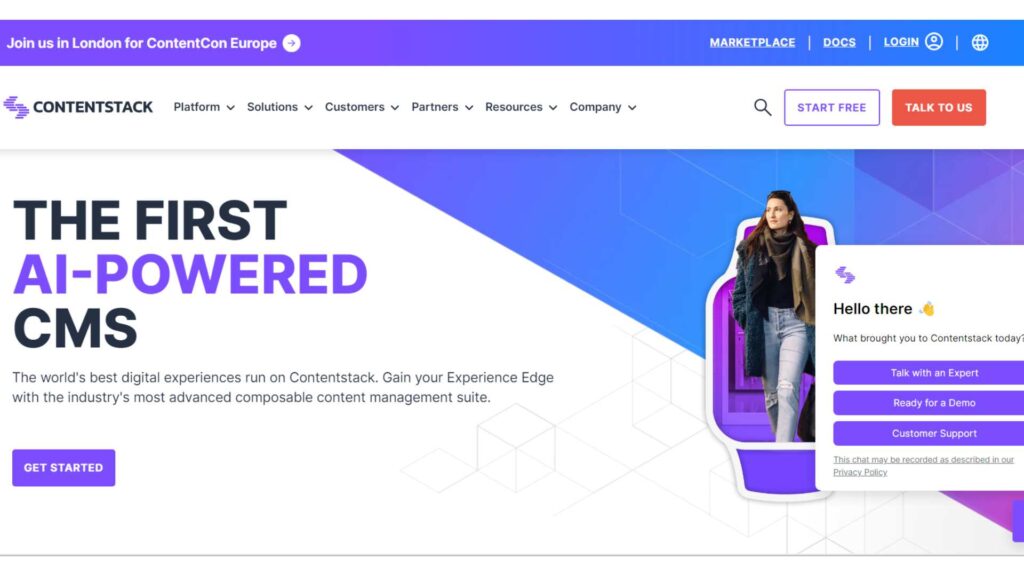
Another headless CMS on the radar, Contentstack is specifically designed to assist an enterprise to easily manage and deliver content across different digital channels without much hassle.
What sets Contentstack apart is its stunningly user-friendly and intuitive interface, which is really great, considering the technical and nontechnical hands accessing content.
It features extremely robust APIs and SDKs, and subsequently, developers can easily customize applications and integrate their work with any tool or service.
Key Features:
- An intuitive drag-and-drop interface
- Powerful APIs and webhooks
- Advanced workflow management
- Built-in asset management
- Very easy to use by developers and content creators
- Good for multichannel content distribution
- Advanced security capabilities
How to Use:
- Set up content types and fields
- Firstly create and manage the entries
- API powered content into any channel
Pricing:
Quote-based on Meeting particular requirements with solutions for businesses of any size
4. Drupal
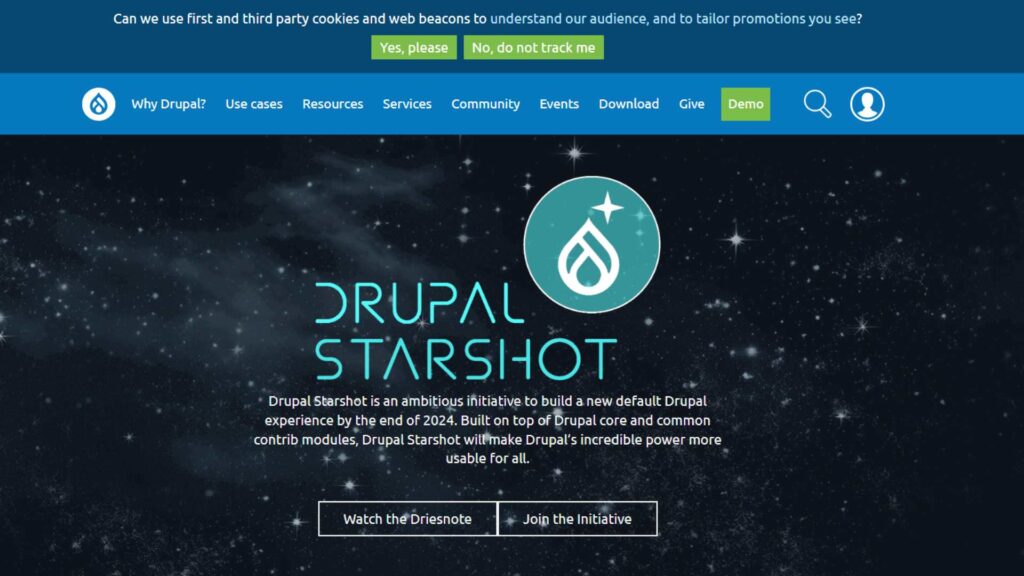
Drupal is the next widespread open-source CMS system that is outstandingly flexible and rich in functionality.
It’s mostly recommended for large organizations and government establishments, especially thanks to its reputational features: flexibility and security. It is highly customizable, thanks to Drupal’s modular architecture, and able to support anything from a very simple blog to a really complex, content-rich site.
The platform has a very large and active community of developers who keep improving it, as well as hundreds of modules that enhance its functionality in some way.
Key Features:
- Huge extensibility and customizability
- Good security features
- Excellent multilingual support
- Good taxonomy and content organization tools
- Very flexible and powerful
- Large community and an extensive module ecosystem
- Very good at handling large, complex, content-rich websites
How to Use:
- Firstly download Drupal core
- Choose a theme to customise
- Configure modules by adding it
- Add content by creating content types
- Configure user permission and also roles
Pricing:
Drupal in itself is free and open source. There are only costs of hosting, development, and probable premium modules or themes.
5. HubSpot CMS Hub

A part of the greater HubSpot ecosystem of tools, which also provides marketing, sales, and customer service tools, HubSpot CMS Hub is a content management system meant for inbound marketing from the core and is, therefore, very suitable in businesses that focus on content marketing and lead generation.
The HubSpot CMS Hub, in addition to being easily usable by marketers for creating and managing content, also provides developers with all the necessary tools for building custom websites.
Key Features:
- Drag-and-drop page editor
- Built-in SEO and content strategy tools
- Smart content for personalization
- Integrated with HubSpot’s marketing and CRM software
- Simple to use for marketers and non-technical staff
- Inherently thorough lead generation and conversion focus
- Good customer support and educational resources
How to Use:
- Firstly map the site structure
- Pick up a theme to design and build
- Optimize your homepage and other main pages on the website
- Start adding modules and content
Pricing:
From $300 per month in the case of the Professional plan and $900 per month in the case of the Enterprise plan.
6. Joomla

Joomla! is another wide-applied open-source CMS that balances between its ease of use for the users and flexibility for the developers. It delivers an administration interface for content management that novices are even comfortable with, and on the developer part, it offers a powerful framework to build complex sites.
There is great probability for successful use of Joomla for sites that require user management; for example, community portals or social networking websites.
Key Features:
- Flexible content organizational system
- Powerful user management
- Native multilingual support
- Rich extension and template library
- Good balance of ease of use and power
- Ideal for membership and community websites
- Active community and regular updates
How to Use:
- Install Joomla! on your server
- Template customization
- Categorize and add articles
- Add more features using extensions
Pricing:
Joomla! is free and open-source. Costs associated with hosting, development, and potential premium extensions or templates.
7. Kontent.ai
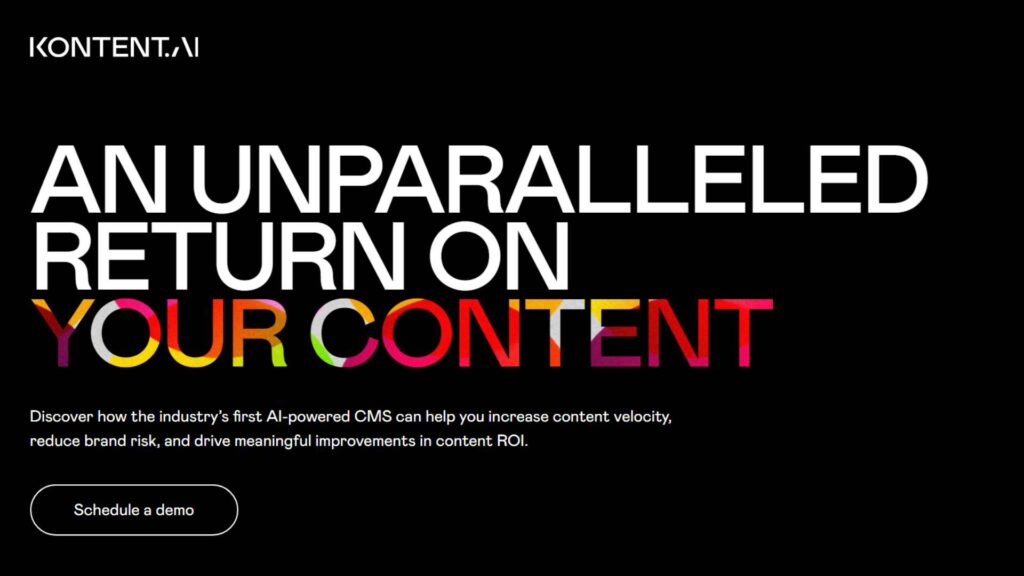
Kontent.ai is a cloud-based headless CMS software designed to make content operations easy for businesses. The user-friendly interface is a way to beautifully handle all the content creators, strong APIs, and endless possible ways with custom front-end experiences for developers.
Kontent.ai impresses more, with great emphasis on content modeling and structured content, which makes the management and reuse of content across different channels and platforms easy.
The platform provides advanced collaboration options, allowing custom workflows and approval processes to set an excellent project for teams working on complex content projects.
Key Features:
- Flexible content modeling
- Advanced collaboration tools
- AI-powered content recommendations
- Powerful APIs and SDKs
- Excellent for managing structured content
- Strong focus on collaboration in team
- Scalable and performant
How to Use:
- Define your content model
- Create and manage content
- Use Ai suggestions for content optimisation
- Integrate with APIs
Pricing:
Free – for small projects, $2,499 per month and above for teams and enterprises.
8. Shopify

Many people have known Shopify as merely an e-commerce website. With features over the years, it is, however, more of a CMS for online stores. It has a very easy-to-use interface in managing products, orders, and contents, which can be very useful for even a little bit of a technical user.
What sets Shopify apart is the e-commerce functionality that at no point tries to have you provide your own, as it already comes with secure payment processing, inventory management, and shipping integration—right out of the box.
Key Features:
- Integrated e-commerce functionality
- Large app store for extending its features
- Native SEO and marketing tools
- Responsive themes for mobile
How to Use:
- Setting up shop
- Customize your theme
- Add products with details on the collections
- Add Pages and Blog posts
- Payment and shipping options
Pricing:
Basic Shopify from $29/month. It has more expensive plans for businesses that are bigger.
You May like: Best Shopify Themes
9. Sitecore XM
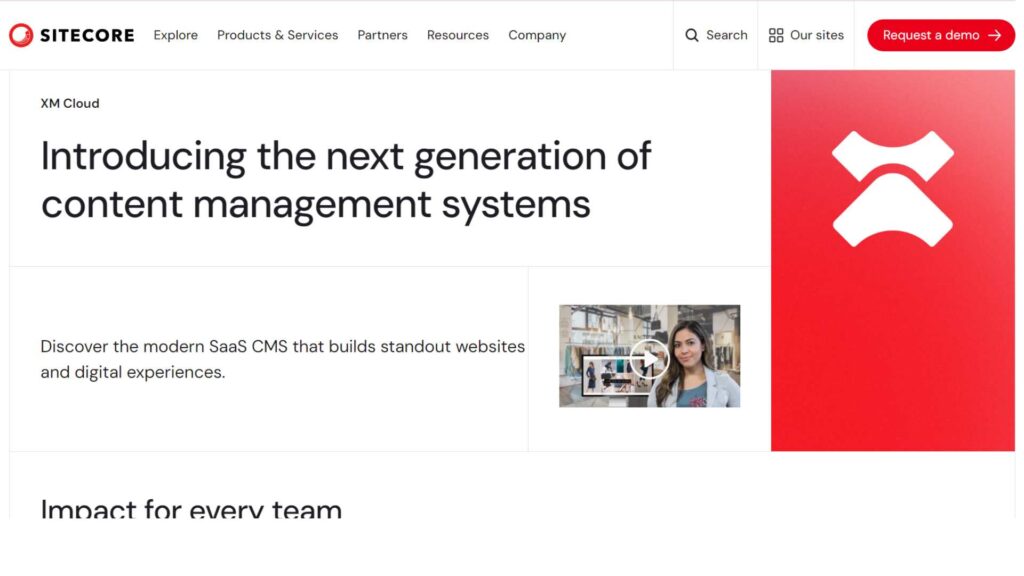
Sitecore Experience Manager is a full-cycle enterprise CMS and is part of the larger Sitecore Digital Experience Platform. It is designed to enable organizations to simply develop, manage, and enhance experiences across any number of digital channels.
It simply enables businesses to deliver individualized customer experiences in real time by providing perfectly tailored content to their liking.
It comes with best-in-class analytics integrated with testing tools to ensure continuous optimization of the digital experiences.
Key Features:
- Advanced personalization and A/B testing
- Omnichannel content delivery
- Integrated digital asset management
- Strong analytics and optimization toolkit
- Solid offering for enterprise-level digital experiences
- Great personalization and customer journey optimization
- Possesses a flexible integration environment
How to Use:
- Set up a content tree
- Templates and renderings creation
- Content addition and organization
- Personalization rules configuration
- Publish and analyze Content performance
Pricing:
Custom-based, depending on specific business needs, though typically in the enterprise range.
10. WordPress
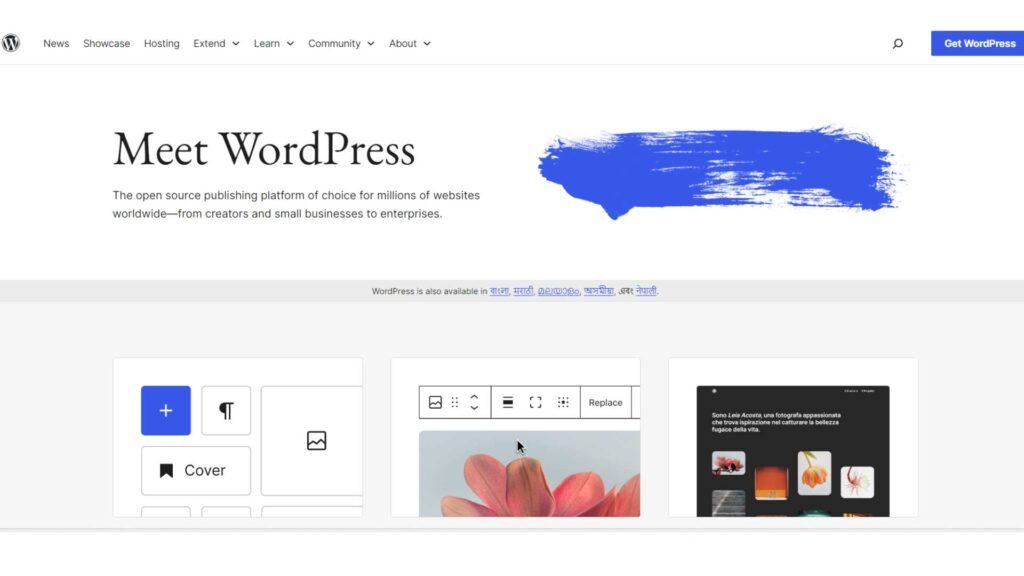
WordPress isn’t considered the most popular CMS on the planet for nothing; it runs over 40% of the internet’s population of websites. It is easy to use because of its good interface; more themes and plugins are excellent in accessibility.
When it was initially developed as a blogging platform, growth soon ensured that WordPress was now able to manage just anything, from simple blogs to complex e-commerce sites.
It is open-source by virtue and has a large developer community, so new updates and features are coming out all the time.
Key Features:
- User-friendly content editor
- Huge library of themes and plugins
- SEO-friendly structure
- Regular updates with security patches
How to Use:
- Install WordPress on your server
- Choose and personalize Theme
- Essential plugins’ installation
- Pages and posts creation
- Organize with categories and tags
Pricing:
WordPress itself is free and open source. However, costs are related to hosting, premium themes or plugins, and possible development work.
Final Words
And there it is, the tour of the grand, top 10 Content Management Systems!. From enterprise giants to
agile newcomers, each of these different CMS platforms has a flavor of its own in terms of digital magic. You’re either a blogger talking to the people of the world on your own or you’re a big company looking to give personalized experiences to millions. There is a CMS out there that is your digital sidekick.
FAQs
headless CMS separates content management from content presentation, therefore offering flexible content delivery over multiple platforms.
WordPress is, but you might pay for hosting, premium or plugins.
While big platforms like Shopify are fully oriented for e-commerce, you can also look at alternatives like WordPress with WooCommerce.
Yes, but it can be tricky. Fortunately, most of the CMS platforms available have migration tools to make it a bit easier.
Looking for some Shopify alternatives in India?
